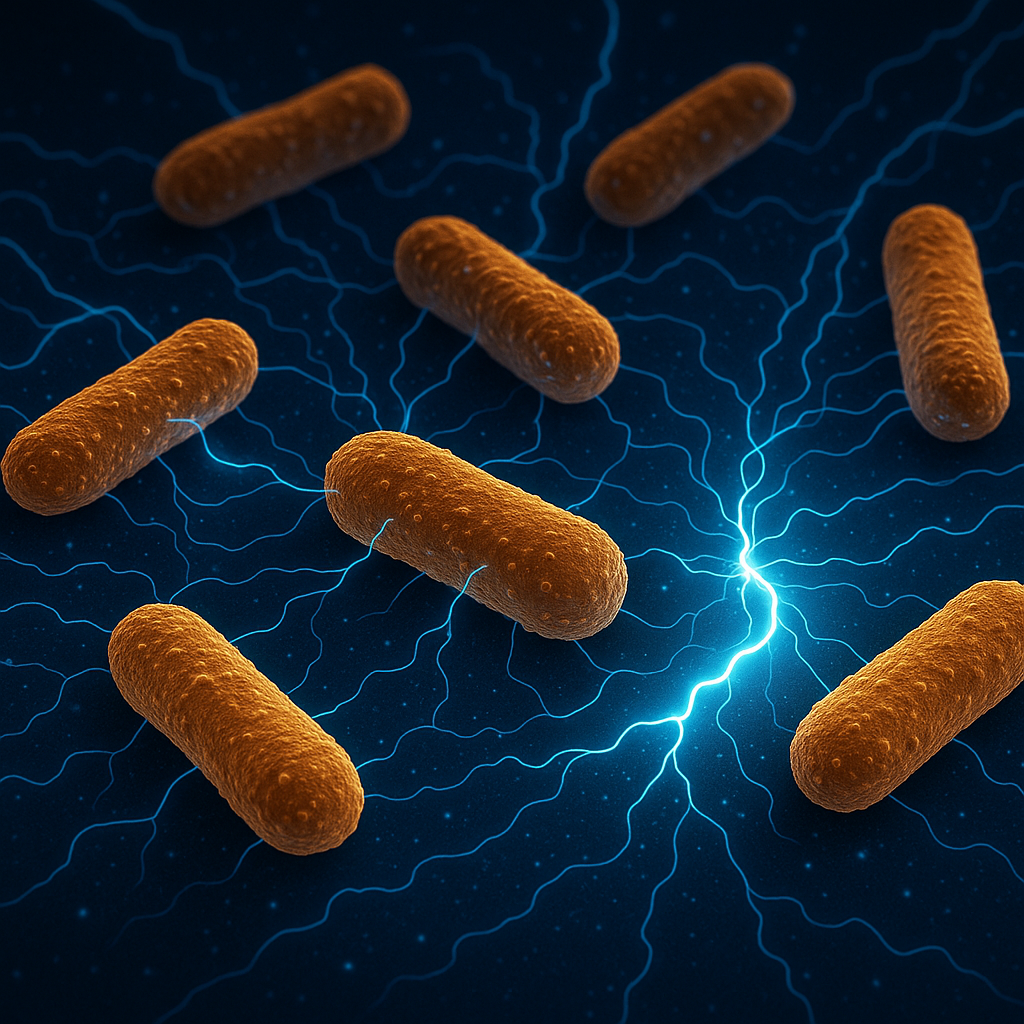Shocking Twist in Microbiology: Electricity-Producing Bacteria Could Spark Clean Energy Breakthroughs
New research unlocks a hidden survival strategy in microbes, with potential to transform biomanufacturing and sustainable energy systems.
In a groundbreaking discovery with far-reaching implications for clean energy, scientists have revealed that certain bacteria generate electricity as part of their respiration process—essentially breathing by pushing electrons into their surroundings rather than inhaling oxygen. This natural, microscopic phenomenon not only answers a long-standing scientific mystery but also paves the way for new developments in bioenergy, wastewater treatment, and carbon-neutral manufacturing.
Led by bioscientist Caroline Ajo-Franklin of Rice University, the study sheds light on how these bacteria expel electrons externally, offering a first glimpse into an obscure yet powerful biological mechanism. Published in Cell, the research explores the electrochemical behavior of bacteria in environments deprived of oxygen and illustrates how this phenomenon could be harnessed to design energy-efficient systems powered by life itself.
“This work solves a mystery that has eluded scientists for over two decades,” said Ajo-Franklin, professor of biosciences and director of the Rice Synthetic Biology Institute. “It also introduces a new and potentially widespread survival strategy among microbes—breathing through electricity.”
A New Frontier in Microbial Energy
Modern life forms, including humans and plants, rely on oxygen as the final electron acceptor in respiration. But bacteria, ancient and highly adaptable, evolved to survive long before atmospheric oxygen became abundant. Many have developed ingenious alternatives to aerobic respiration, thriving in environments like deep-sea hydrothermal vents and the human gut.
This new study reveals that some of these bacteria utilize compounds called naphthoquinones—naturally occurring molecules that act as “redox shuttles”—to ferry electrons out of the cell and into conductive surfaces in their environment. This process, called mediated extracellular electron transfer (EET), mimics how batteries release current and allows bacteria to metabolize food and generate energy even in oxygen-free conditions.
“Naphthoquinones act like molecular couriers,” explained Biki Bapi Kundu, a Rice University doctoral student and first author of the paper. “They carry electrons out of the cell so the bacteria can break down food and stay alive.”
From Mystery to Mechanism
For decades, scientists have known about EET but lacked clarity on how redox shuttles like naphthoquinones function inside the cell. The Rice team combined genome editing, advanced electrochemistry, and systems biology to investigate Escherichia coli (E. coli), a microbe not typically known for its electrical behavior.
Their work found that under anaerobic conditions—where traditional electron acceptors like oxygen are absent—E. coli can reduce the molecule 2-hydroxy-1,4-naphthoquinone (HNQ) through enzymes NfsB and NfsA. This redox cycling enables the bacteria to deposit electrons onto an external electrode, essentially using it as a respiratory organ.
Computer models simulating these bacteria in oxygen-deprived but conductive environments confirmed the feasibility of this behavior. When placed on conductive materials in lab settings, the microbes continued to grow and generate electrical current—“breathing” through the surface beneath them.
Applications in Clean Tech and Beyond
These revelations could transform the way we think about biological systems in industrial applications. Electricity-exhaling bacteria may be used to stabilize electron imbalances in wastewater treatment systems or boost efficiency in biofuel and biochemical manufacturing. Their ability to interact with conductive surfaces also opens avenues for integrating them into living electronics or microbial fuel cells.
“The work lays the foundation for harnessing carbon dioxide through renewable electricity,” Ajo-Franklin said. “It’s analogous to how plants use sunlight for photosynthesis. Now we can imagine building cleaner, smarter systems with bacteria at their core.”
In the longer term, this research may contribute to carbon capture technologies, self-healing bio-batteries, and climate-positive bioreactors. By converting what was once an obscure bacterial quirk into a platform for innovation, Ajo-Franklin and her team are pushing the boundaries of what’s possible at the interface of biology and energy.
As scientists continue to explore life’s hidden electrochemical talents, one thing is becoming clear: the future of clean energy might just be microbial.
This article contains AI generated content using information from these sources:
Interesting Engineering - https://interestingengineering.com/energy/bacteria-that-generate-electricity-clean-energy
